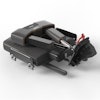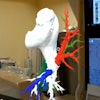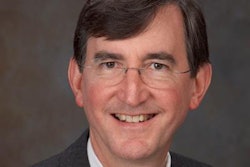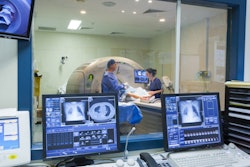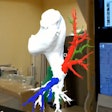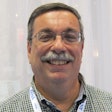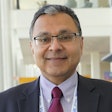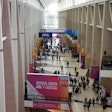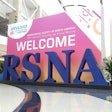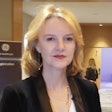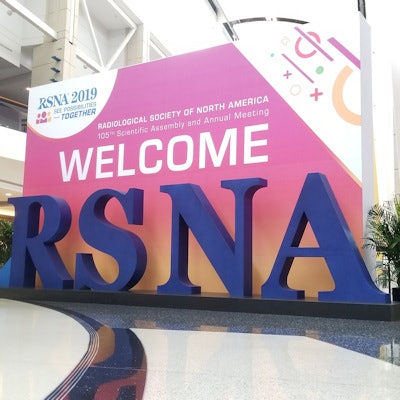
CHICAGO - In a medical world moving at ever-increasing speeds and making greater demands, it will require a conscious effort on the part of individual radiologists to create a culture of patient interaction and keep humanity at the forefront of the specialty, RSNA 2019 President Dr. Valerie Jackson said in her opening address.
With growing case volumes and requests for faster turnaround times, there exists the temptation for medical professionals to keep their heads down and just hold on, she continued. But medicine is already headed into a future in which patients want and need to hear from clinicians, including radiologists, more than ever before.
Working to fulfill these needs in the midst of the current environment in medicine takes true courage and a willingness to change one's perspective, Jackson said. Being willing to look at the same issues in new ways can help radiologists move forward in forming new, more beneficial relationships with patients, strengthening radiology practices, and improving career satisfaction.
"There are many good, compelling reasons to take a new look at the way we do things and make a new effort to get out of our reading rooms," she said. "I strongly believe that, in 2019, we have both the opportunity and the capacity to forge a new level of connection with our patients, and that it will be a huge benefit to radiology to do so."
Passengers on a plane
To illustrate her point, Jackson compared the scenario of patients waiting for their imaging results with airplane passengers hoping to understand why they are still stationary on the tarmac. Jackson is executive director of the American Board of Radiology (ABR) and has held various academic appointments at the Indiana University School of Medicine.
Much like passengers on a delayed flight, patients waiting for their results have to sweat it out as they wonder what will happen; like passengers, patients yearn for a human voice for information and reassurance. And just as pilots speak to the passengers, the radiologist has the knowledge and opportunity to inform patients regarding their condition, addressing their concerns.
The concept of increasing interactions between radiologists and patients is in no way a new one, but it has reached a new level of importance due to a variety of developments over the past several years, Jackson noted.
Recent studies have reported that as many 84% of patients are now interested in meeting their radiologists. In addition, the transition toward value-based care has increased the participation of patients in medical decision-making and, in turn, the importance of gaining their trust. The shift toward team-based delivery models has also increased the need for radiologists to interact more regularly with patients and other physicians. Finally, the ongoing integration of artificial intelligence into medicine has the potential to automate many tasks and free up more time for radiologists to communicate with patients.
There remain numerous challenges to increased interaction between radiologists and patients, from mounting case loads and anxiety among radiologists about meeting with patients to relative value unit (RVU) compensation plans offering little, if any, financial incentive to justify the meetings.
Despite these hurdles, and whether a radiologist is more introverted than extroverted, or would rather spend more time in the reading room, interacting with patients and other physicians is a fundamental component of not just medical care but personal and career satisfaction as well, Jackson said. Human connection, in that sense, may serve as an antidote to physician burnout, taking radiologists back to their Hippocratic roots and reminding them of how critical their roles are as people.
Practical steps
But how can radiologists and their colleagues achieve this seemingly elusive goal? Improving patient-radiologist interactions to benefit all parties involved begins with a willingness to alter one's perspective and look at things in new ways.
"If we radiologists are willing to change our perspective, our profession can advance much more rapidly toward a long-desired goal: We can build stronger, more direct connections with both our patients and the healthcare providers who refer them to us," Jackson said.
To that end, radiologists can start by looking inward and reexamining how they view themselves and their role in patient care. How much, for instance, does increasing patient interactions actually decrease productivity? Recent surveys have indicated that only about 4% of radiologists found patient interaction to interrupt their overall workflow.
Viewing patient interaction as something requiring effort yet essential to work, such as exercise, may actually increase work efficiency over time because of potential benefits such as better mental health, an increased sense of value, and deeper patient trust, according to Jackson. In light of these benefits, she proposed several practical steps radiologists could take.
First, a radiologist could begin by making a commitment to engage with at least one patient a week, even if only to introduce himself or herself to the patient. Along with this measure, radiologists should be alert to opportunities to interact with patients, asking about how their care is going and providing contact information or sharing printouts and other tools to help address patient concerns.
Next, radiologists can take time to reach out to referring physicians. Learning more about their needs and identifying any gaps in information concerning imaging results can help enhance the working relationship and make the pathway to patient interaction more attainable.
Finally, as gatekeepers of valuable information, radiologists should work to build a culture as early as medical school that values effective communication and engagement, sound listening skills, the ability to translate complex information, and demonstrations of empathy.
Perhaps the most important step of all is "to accept the fact that the end result of increased patient interaction is well worth the effort required," Jackson said. "Is it possible that everyone involved in the care equation -- patients and families, referring physicians, even the radiologists themselves -- might benefit? I think that the answer is a resounding yes."
Finding meaning in radiology
Following the president's address, Dr. Abraham Verghese of Stanford University delivered the opening session lecture in which he echoed Jackson's belief in the importance of patient-physician interactions as much for the radiologist as the patient.
Since the early days of diagnostic medicine, the practice of medicine has transitioned away from physicians intently examining patients and toward staring at a computer screen, and away from interspecialty interaction to people sitting at desks and reading reports, he noted. Many healthcare providers, like society as a whole, are becoming increasingly distracted by peripheral things and are not being as attentive to the patient as they can be.
This shift has led to a wide range of consequences, including greater patient dissatisfaction, worsening provider wellness (with reports suggesting that some 50% of physicians claim to be depressed), more medical errors, and a loss of ritual in medicine.
The ritual is a particularly crucial part of medicine that inherently validates a patient's complaint, he noted. The ritual of a patient entering a healthcare system involves a symbolic transformation, one in which a physician turns medical data into vital patient information that centers on the patient's body as a locus of personhood and disease. Radiologists are in possession of imaging data and the skill to interpret them, connecting beautiful images from an imaging report to a patient's personhood. Yet this ritual appears to be disappearing behind electronic medical records and countless tasks associated with maintaining them.
"I often go to the radiology department and I think it's always a little unnerving; you don't know what's going to happen, or how it's going to unfold," he said. "But I think, because I'm a physician, I've had the great privilege of having an attentiveness from [radiologists] that is really powerful. Why can't we extend this as best we can to everyone else?"

